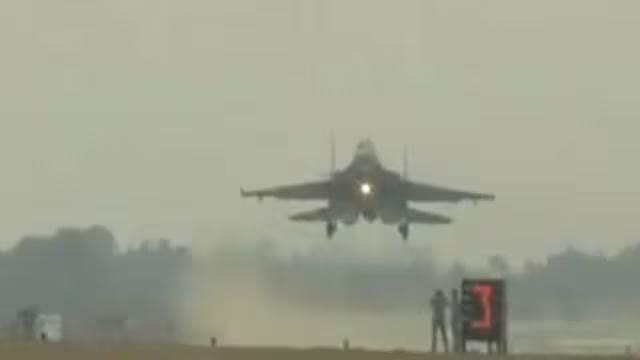
Why is IAF conducting fighter jets’ landing & take-off drill at Ganga Expressway in UP?
The Indian Air Force (IAF) recently conducted a series of take-off and landing exercises on the Ganga Expressway in Uttar Pradesh, using fighter jets like Rafale. The exercise, which took place during both day and night, aimed to assess the expressway’s potential as an alternative runway during times of war or national emergencies. This landmark drill marks the first time an airstrip has been created on any expressway in India, capable of handling both day and night landings of jets.
The Ganga Expressway, which spans over 594 kilometers, is a major infrastructure project aimed at reducing travel time between Delhi and Lucknow. However, it appears that the expressway may also have a secondary function as a military airstrip. The IAF’s drill on the expressway’s surface demonstrated its ability to accommodate fighter jets, like the Rafale, which are an integral part of the country’s defense arsenal.
The drill was a significant exercise for the IAF, as it allowed the force to test the expressway’s capabilities under various conditions. The exercises were conducted using fighter jets, which are known for their high-speed and agility, making them ideal for testing the expressway’s infrastructure. The IAF’s decision to conduct the drill during both day and night was crucial, as it simulated real-world scenarios, including emergency landings and take-offs under different lighting conditions.
The creation of an airstrip on the Ganga Expressway has significant implications for India’s defense strategy. In the event of a war or national emergency, the expressway can serve as an alternate runway, allowing the IAF to quickly mobilize its fighter jets and respond to threats. This flexibility is critical, as it allows the IAF to maintain its operational effectiveness, even in the event of a surprise attack or a sudden change in the battlefield.
The Ganga Expressway’s ability to accommodate fighter jets also underscores the growing importance of infrastructure in India’s defense strategy. As the country’s military modernizes and expands its capabilities, it is increasingly recognizing the need for robust infrastructure to support its operations. The creation of alternate runways, like the one on the Ganga Expressway, is a critical component of this strategy, as it provides the IAF with the flexibility to respond quickly and effectively to emerging threats.
The IAF’s drill on the Ganga Expressway has also generated interest among defense experts and enthusiasts. The exercise has been seen as a significant step forward in India’s defense capabilities, as it demonstrates the country’s ability to adapt and innovate in response to emerging challenges. The use of the Ganga Expressway as an airstrip also highlights the importance of infrastructure in supporting India’s defense strategy, as it provides the IAF with an alternative runway that can be used in a variety of scenarios.
In conclusion, the IAF’s landing and take-off drill on the Ganga Expressway in UP is a significant development in India’s defense strategy. The exercise has demonstrated the expressway’s potential as an alternative runway during times of war or national emergencies, and has underscored the growing importance of infrastructure in supporting India’s defense capabilities. As the country continues to modernize and expand its military, the creation of alternate runways like the one on the Ganga Expressway will play a critical role in ensuring the IAF’s operational effectiveness.






